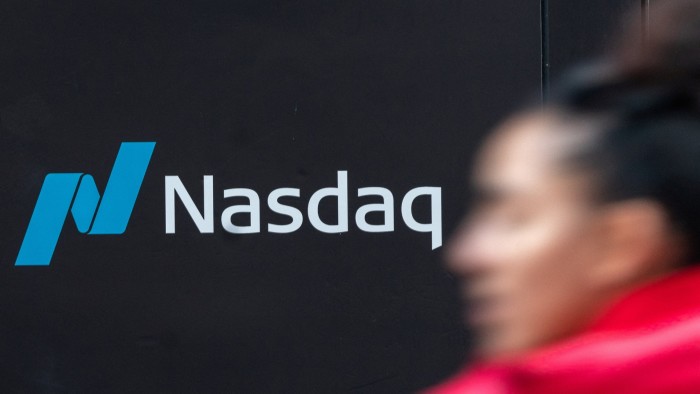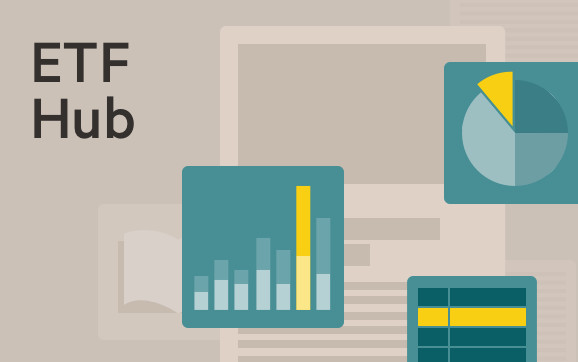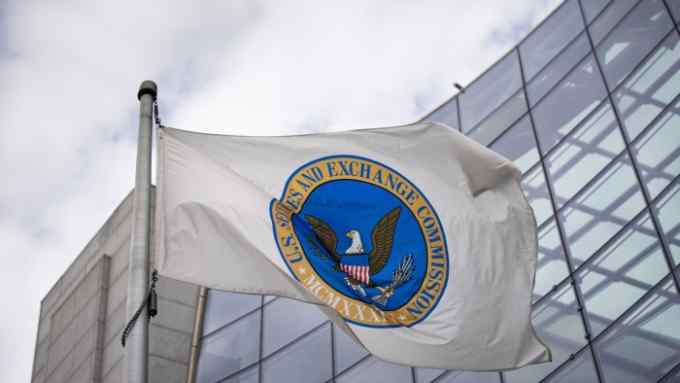ETFs shrug off pending multitrillion- dollar Nasdaq 100 revamp

Simply sign up to the Exchange traded funds myFT Digest -- delivered directly to your inbox.
Latest news on ETFs
Visit our ETF Hub to find out more and to explore our in-depth data and comparison tools
A multitrillion-dollar revamp of one of the world’s largest stock market indices looks set to be a bit of a damp squib in the exchange traded fund world.
The combined weighting of six vast technology behemoths — Microsoft, Apple, Alphabet, Nvidia, Amazon and Tesla — in the Nasdaq 100 index is due to be slashed from the 50.9 per cent they reached at the close of trading on July 7, when the “special rebalance” was announced, to just 40 per cent.
The revamp, which will be enacted at close of trading on July 21, is designed to ensure funds tracking the Nasdaq 100 do not breach industry-wide fund-concentration limits, after a strong rally by the tech mega-caps drove their combined weighting beyond limits set by the Securities and Exchange Commission, the regulator.
Given that the Nasdaq 100 has a market capitalisation of $17.9tn, and that it is tracked by 14 $1bn-plus ETFs with total assets of more than $280bn, according to data from Morningstar, the potential for ructions would appear to be significant.
Moreover, the shake-up is highly unusual with Nasdaq having conducted only two previous special rebalances of its flagship index, in 1998 and 2011. So far, though, the market reaction has been limited.
This is despite one obvious fear: that investors in passive ETFs would be “front run” by more nimble, active investors.
Based on current market prices, the ETFs will be forced to sell $30bn worth of stock in the six companies and plough the proceeds into the remaining 94 companies that will see their weighting increase at the close on July 21.
Given that other market participants are aware of this, it might be expected that the stock prices of the super six would have underperformed the wider Nasdaq 100 index since the rebalance was announced. If this occurred, the ETFs would be forced to sell stocks that had fallen in value and buy those that had been pushed higher.
There is evidence that this front-running has occurred in the past, with one academic paper claiming that US index-tracking funds typically lose about $3.9bn a year by using predictable, mechanical trading strategies that are exploited by nimbler market participants during index rebalances.
To date that has not happened this time, however, with a weighted average of the supersized sextet having marginally outperformed the wider Nasdaq 100 since the revamp was announced.
Bryan Armour, director of passive strategies research, North America, at Morningstar, was unsurprised by this.
“The stocks being rebalanced are among the most liquid in the world and they are in high demand by investors. It would be hard to successfully trade around the rebalance,” said Armour, who argued that the issue of front-running ahead of index rebalances was “no longer as much of an issue as it was 20 years ago”.
Ryan McCormack, factor and core equity strategist at Invesco, whose QQQ Trust (QQQ), at $211bn, is the world’s fifth-largest ETF and the largest Nasdaq tracker, also played down the dangers.
“The special rebalance is not the only thing that is happening in markets and that affects these companies,” he said.
Investors also appear sanguine, with McCormack saying QQQ and EQQQ, its European Ucits equivalent, had seen net inflows of more than $1.9bn between them since Nasdaq announced the rebalance.
Nevertheless, Direxion’s Nasdaq-100 Equal Weighted Index Shares ETF (QQQE) has taken in a punchy $400mn so far this month, pushing its assets to a record high of $1.2bn, as some investors seek to profit from any outperformance by the smaller stocks in the index.
Todd Rosenbluth, head of research at VettaFi, welcomed Nasdaq’s move, saying the rebalance “can protect investors from themselves”.
He added: “One of the benefits of investing in ETFs like QQQ is diversification. Rather than owning Apple, Amazon.com or Alphabet directly, advisers can use these ETFs to spread the risk around and get exposure to companies in different sectors.
“When advisers look inside QQQ later in July it might look a little different, but it will be for the right reasons.”
Armour did, however, foresee the possibility of a “minor drag on performance” for Nasdaq-tracking funds, given the trading costs from the rebalance.
Moreover, there is a risk that ETFs may incur a tax bill as a result of the rejig. Unlike US-domiciled mutual funds, ETFs can often avoid incurring capital gains tax liabilities by offloading winning positions “in kind” via market makers known as authorised participants, rather than selling the stocks outright as a mutual fund does.
Latest news on ETFs

Visit the ETF Hub to find out more and to explore our in-depth data and comparison tools helping you to understand everything from performance to ESG ratings
However, the sheer scale of the selling Nasdaq 100 ETFs will need to do at the market close on July 21 means the AP option will not be practical.
“Selling high-performing stocks comes with the potential for a tax bill for funds,” Armour said.
But given that the stocks in question “are among the most heavily traded securities in the US,” he believed larger ETFs would be able to find plenty of opportunity to offload “low tax-basis securities, making capital gains distributions unlikely”.
Nevertheless “smaller ETFs and mutual fund investors may receive a tax bill from selling these high-flying companies”, Armour feared.
McCormack was relaxed about the potential tax implications for investors in QQQ. “Our portfolio management team is equipped with, and will use, any available tools to limit the tax liability of our funds,” he said.

Comments